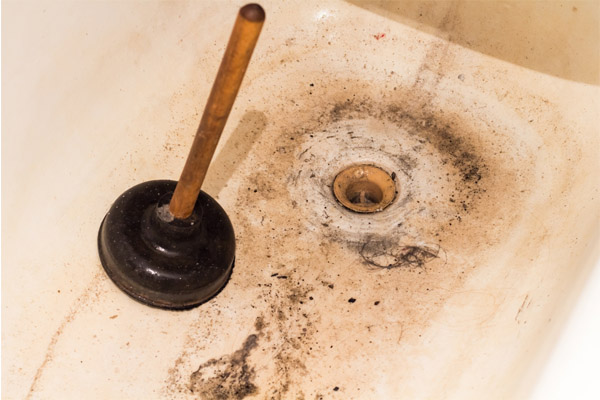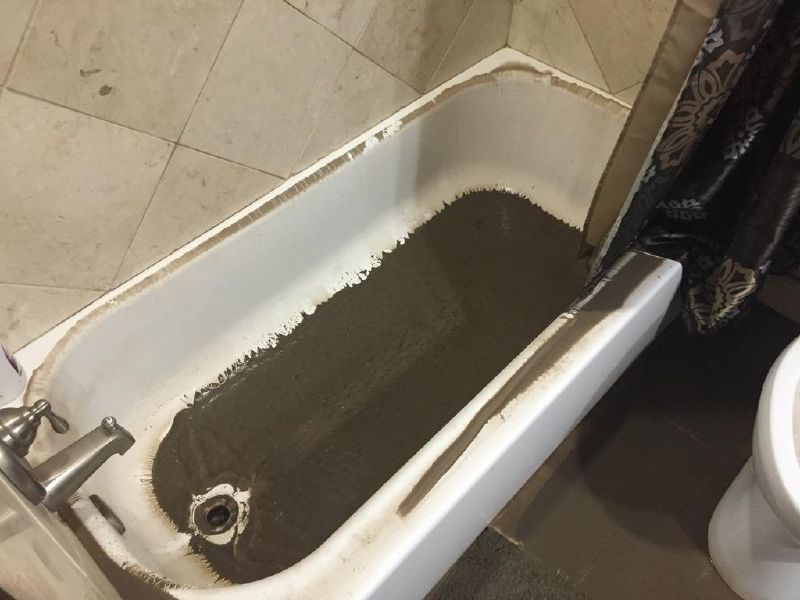Deciphering the Causes of Sewage in the Bathtub
Deciphering the Causes of Sewage in the Bathtub
Blog Article
Everybody may have their unique beliefs when it comes to What to Do if Sewage Starts Coming Up Through Your Bathtub.

Sewer backup in the bathtub can be an upsetting and unsanitary issue for any type of homeowner. Not just is it inconvenient, but it also poses major wellness threats and suggests underlying issues with the plumbing system. Understanding why sewage is turning up through the bath tub is crucial for taking appropriate activity to deal with the problem efficiently.
Intro to the Problem
Common Factors for Sewer Back-up
Obstructions in the Sewage System Line
One of one of the most usual reasons for sewage backup is an obstruction in the drain line. This can occur because of the buildup of debris, oil, or foreign things in the pipelines, preventing appropriate circulation and creating sewage to back up into your bathtub.
Tree Origin Intrusion
Tree roots looking for wetness and nutrients can infiltrate sewer lines through little cracks or joints. Over time, these origins can expand and broaden, triggering substantial damage to the pipes and resulting in sewer backup problems.
Understanding the Problem
When sewage starts backing up right into the tub, it's a clear indication of a trouble with the drain system. The wastewater that must be streaming away from your home is rather discovering its back right into your space, which can bring about significant damages and carcinogen.
Possible Reasons
A number of aspects can contribute to sewer back-up in the bathtub. From clogs in the sewage system line to problems with the plumbing framework, determining the origin is important for locating a service.
Aging Framework
Older homes may have outdated plumbing systems that are much more prone to deterioration, splits, and damage. As pipes age, they end up being extra vulnerable to leakages and obstructions, increasing the possibility of sewage back-up occurrences.
Heavy Rainfall or Flooding
Throughout periods of heavy rainfall or flooding, the sewer system might end up being overloaded with excess water, creating back-ups and overflows. This can lead to sewage supporting right into tubs and other fixtures inside the home.
Signs of Sewage Back-up
Foul Odors
Undesirable odors rising from drains or components, particularly in the shower room, might suggest sewer back-up issues. These smells are often strong and persistent, indicating a problem that needs instant interest.
Slow Draining Fixtures
Bathtubs, sinks, and toilets that drain slowly or not whatsoever could be experiencing sewage back-up. If several components are influenced concurrently, it's most likely that the problem originates from a common factor, such as the primary drain line.
Gurgling Noises
Weird gurgling or bubbling sounds originating from drains when water is running in other places in the house are a sign of air entraped in the plumbing system. This air accumulation can arise from sewer back-up and must be examined quickly.
Wellness Threats Associated with Sewage Backup
Contamination of Water
Sewage back-up can infect the supply of water in your home, presenting a major health danger to you and your family members. Direct exposure to infected water can bring about gastrointestinal concerns, skin infections, and various other health problems.
Mold Development
Wetness from sewer back-up can produce suitable conditions for mold and mildew growth in your house. Mold spores can exacerbate respiratory system issues and create allergies in sensitive individuals, making punctual cleaning vital.
Spread of Condition
Sewage consists of hazardous bacteria, infections, and bloodsuckers that can create a range of illness, including hepatitis, cholera, and gastroenteritis. Entering contact with sewage or contaminated surfaces places you in danger of infection.
Tidying up After Sewage Back-up
Sanitation Procedures
Completely decontaminate and disinfect affected areas after sewage back-up to eliminate unsafe microorganisms and protect against mold and mildew development. Use suitable cleansing products and protective equipment to make certain risk-free and reliable cleaning.
Restoration of Influenced Areas
Fix any damage to floor covering, wall surfaces, or components caused by sewage backup. Depending upon the level of the damages, you may require to replace carpeting, drywall, or various other materials to restore your home to its pre-loss condition.
Immediate Actions to Take
Turning Off Water System
In the event of sewage backup, it's essential to switch off the supply of water to avoid further contamination and damage. Find the primary water shutoff valve in your home and closed it off up until the problem can be solved.
Contacting a Professional Plumber
Handling sewer back-up is not a DIY task. Contact a qualified plumber with experience in taking care of sewage-related issues to analyze the circumstance and execute required fixings or cleanups.
Preventing Contact with Polluted Water
Up until the sewage backup is resolved, avoid contact with contaminated water to prevent the spread of microorganisms and microorganisms. Put on safety equipment if you have to be in the damaged location and clean your hands thoroughly later.
Preventive Measures
Routine Maintenance of Drain Lines
Set up regular assessments and maintenance of your sewer lines to recognize and resolve prospective issues before they escalate into major problems. This can consist of clearing out particles, evaluating for tree root breach, and fixing any broken pipes.
Mounting Bayou Shutoffs
Take into consideration installing backwater valves in your plumbing system to prevent sewage from receding right into your home throughout durations of heavy rainfall or flooding. These valves immediately close when water starts backing up, safeguarding your building from contamination.
Appropriate Disposal of House Waste
Prevent flushing anything other than bathroom tissue and human waste down the commode to prevent obstructions and obstructions in the drain line. Dispose of oil, oil, and various other home chemicals appropriately to decrease the threat of plumbing problems.
Why Is Water Backing Up in My Bathtub When I Flush My Toilet?
What to do about a sewer line clog
First, don’t bother with plunging. No amount of plunging will dislodge the clog in a sewer line. The clog is too far away. Plungers are for clogs in the toilet itself, not the sewer line. Plus, the most likely causes of a sewer clog are:
Tree roots Flushed toys or feminine products Grease buildup Those items don’t move easily. And in the case of tree roots, the roots need to be cut out of the pipe and the pipe will need to be repaired.
You’ll need a closet auger. A closet auger is a type of plumber’s snake with a protective cover to keep from scratching the delicate porcelain toilet. If the clog is further down, you may need to remove the toilet or use one of your cleanouts to get to the clog.
We also recommend doing a video inspection of the drain to ensure that the cause of the clog has been completely removed. Otherwise, you could have the same problem again in a few days or weeks.
https://mspplumbingheatingair.com/blog/why-is-water-backing-up-in-my-bathtub-when-i-flush-my-toilet

Do you like reading up on Why is Sewage Backing Up Into My Bathtub?? Place a remark down below. We will be glad to listen to your thinking about this article. In hopes that you come back again in the future. If you appreciated our blog post plz remember to share it. I thank you for your readership.
Book Maintenance
Report this page